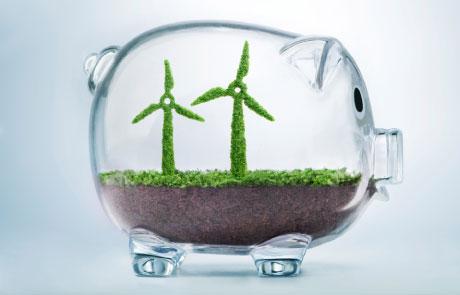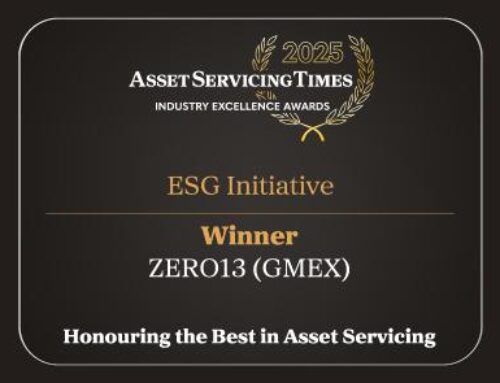The tokenization of renewable energy credits and carbon offsets is emerging as one of the hottest (no pun intended) asset classes and is poised to become one of the most actively traded assets in the coming years. Voluntary carbon credits trading is on an upward trajectory, with a forecasted compound annual growth rate (CAGR) of 14.8% from 2024 to 2032 (Global Market Insights 2023)[1]. Bloomberg NEF[2] estimates that the voluntary carbon credit market could reach $1 trillion by 2037.
Renewable energy claims a substantial share of the voluntary carbon market, with over 32% of credits issued being linked to renewable energy. The majority of these credits (approximately 90%) are derived from grid-connected electricity generation, showcasing a diverse energy mix. Wind energy leads with 49%, followed by hydropower at 33% and centralised solar power at 15%. This distribution not only reflects the current preferences in renewable energy investments but also highlights the sector’s capacity to contribute to carbon neutrality goals (DownToEarth 2023)[3].
The data presented confirms the integral role of renewable energy in the generation of carbon credits, with a significant portion of the market driven by projects within this sector. Despite the impressive growth projections for both the carbon credit and renewable energy markets, there remains a vast potential for further exploration and investment in renewable energy projects.
The ability to tokenize these environmental assets opens exciting possibilities for increased transparency, liquidity, and accessibility. This innovative approach to asset management is not only reshaping how renewable energy projects are financed and traded but is also paving the way for more sustainable practices in the energy sector.
As we become increasingly conscious of our carbon footprint, the demand for renewable energy solutions is skyrocketing. Traditionally, renewable energy assets have operated within closed ecosystems. Enter tokenization: the process of representing real-world assets (RWAs) as digital tokens on a blockchain. These tokens can then be traded on digital asset exchanges, providing investors with fractional ownership of the underlying assets. Tokenization offers a streamlined and transparent way to trade and track these assets, making them accessible to a broader audience. It also opens new opportunities for financing renewable energy projects, allowing smaller investors to participate in large-scale projects.
So what does this mean for exchanges and financial market infrastructure in the context of carbon markets? A good place to start is to learn from the past to see what might happen in the future. After the emergence of electronic markets, exchanges, for some time, became complacent towards innovation and the idea that there would be any real competition. Regulation then became more demanding, forcing the exchanges to react and create opportunities for start-up trading venues with progressive ideas and ‘disruptive’ technology to bring in new solutions. Interestingly, the regulatory changes could also be viewed as ‘disruptive’, as they were the driving force that pushed the exchanges to adopt innovation and adapt with the market in the face of competition.
The concept of tokenized carbon offsets is gaining traction within the crypto industry, offering a more transparent and accessible alternative to traditional carbon credit markets. Projects like Toucan, Regen, and Moss are leveraging blockchain technology to create on-chain carbon credits, providing increased transparency and liquidity in carbon offset markets. Tokenized carbon credits can be traded more easily, making them accessible to a growing class of sustainability-conscious investors and encouraging broader participation in carbon offset markets. Other projects such as KlimaDAO are even using gamification and incentives to engage the community and boost the price of carbon credits, further advocating the need for environmental action. Blockchain technology is also being utilised by projects such as ZERO13, which facilitates an issuer-neutral multi-blockchain solution that provides interoperability across blockchains and systems through application programming interfaces (APIs).
The growing trend towards integrating these assets into public networks mirrors the broader interest in RWAs, including real estate and complex supply chains. However, despite this shift presenting exciting opportunities it also introduces new challenges, particularly regarding cybersecurity. The decentralised nature of these networks presents unique vulnerabilities, such as smart contract exploits, front-running attacks, and denial-of-service (DoS) threats. Blockchain-based systems address these issues by ensuring data provenance and security to prevent fraud and manipulation. Ensuring the integrity and security of tokenized renewable energy assets is paramount to fostering trust and widespread integration into public networks.
This is where Trugard, the Web3 cybersecurity firm providing a real-time intelligence and due diligence data platform, comes into play to address these challenges and leverage the potential of tokenized renewable energy assets. By collaborating with ZERO13, the partnership aims to explore how these assets can be bundled into offerings for sophisticated buyers and producers, enabling a broader ecosystem to benefit from renewable energy investments. Crucially, this bundling requires stringent security controls and advanced protection techniques to prevent abuse and ensure investor confidence. As trust grows in the market via reliable and trusted measurement and continuous verification with remote attestation approaches so does the number of viable projects, which in turn increases supply. By leveraging blockchain technology for cybersecurity purposes, tokenization offers a secure and transparent way to track the ownership and transfer of renewable energy assets. This reduces the risk of fraud and ensures the integrity of transactions.
A key area of focus is the decentralised finance (DeFi) protocols and the security of smart contracts, which are used to automate the execution of transactions in tokenized assets. While DeFi offers exciting possibilities for the renewable energy sector, it also introduces new cybersecurity challenges. Smart contract vulnerabilities, such as reentrancy attacks, access control issues, and the rise of copycat or phishing tokens, can expose renewable energy projects to significant risks. Robust real-time software inspection and secure coding practices are crucial to mitigate these risks and ensure the integrity of renewable energy tokenization, thereby safeguarding against potential financial losses. By enhancing security measures and fostering a broader ecosystem, the partnership between Trugard and ZERO13 seeks to drive increased confidence, enable pre-transaction due diligence, and ultimately accelerate the adoption and listings of tokenized renewable energy assets.
As the renewable energy sector continues to evolve, tokenization stands out as a key enabler of sustainable practices and economic growth. The intersection of tokenized carbon offsets and web3 cybersecurity holds immense promise for financing renewable energy projects. Responsible practices and innovative solutions will be key to addressing climate change and securing our digital future, with more efficient trading and tracking of renewable energy assets.
[1] https://www.gminsights.com/industry-analysis/carbon-credit-market#:~:text=Carbon%20Credit%20Market%20was%20valued,policies%20will%20drive%20business%20growth.
[2] https://about.bnef.com/blog/carbon-offset-market-could-reach-1-trillion-with-right-rules/#:~:text=New%20York%20and%20London%2C%20January,in%20a%20new%20research%20report.
[3] https://www.downtoearth.org.in/news/climate-change/due-credit-the-indian-voluntary-carbon-market-is-growing-exponentially-92091


